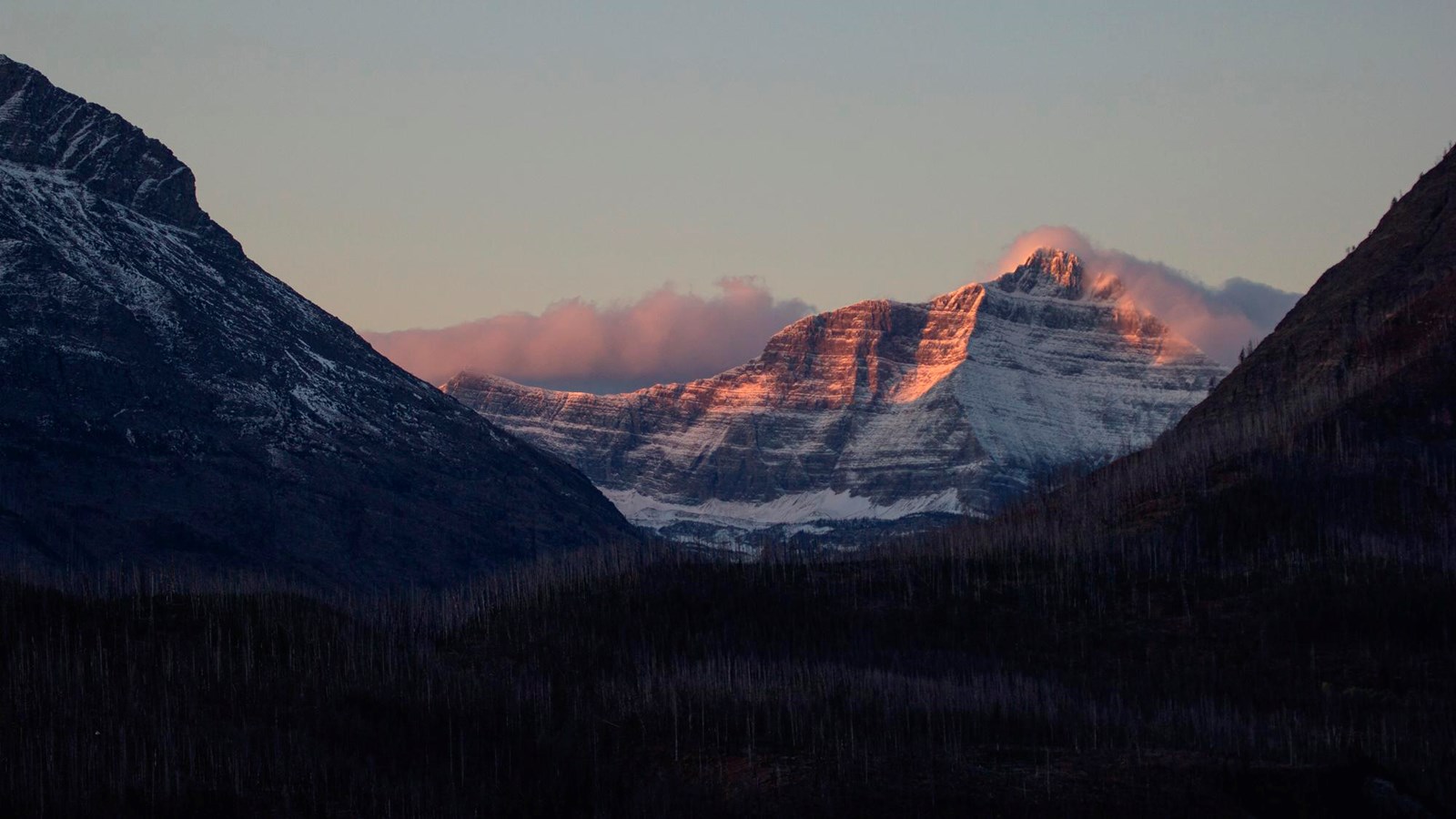Last updated: October 10, 2024
Place
Triple Divide Peak: The Headwaters of Three Watersheds

NPS photo.
Quick Facts
Amenities
1 listed
Parking - Auto
Triple Divide Peak is found along North America’s Continental Divide, which separates the continent’s river systems and runs largely through the Rocky Mountains. A raindrop that falls on the east side of the Continental Divide will flow toward the Atlantic Ocean, while a raindrop that falls on the west side of the divide will flow toward the Pacific Ocean.
Glacier is home to a unique point along this divide—a triple divide. Seen in the distance across the lake, Triple Divide Peak marks this rare hydrologic feature. From its summit, water flows to the Missouri and Mississippi Rivers and into the Gulf of Mexico, into the Columbia River drainage and the Pacific Ocean, as well as into the Saskatchewan River and eventually Hudson Bay, making Glacier the headwaters for three major North American watersheds. Water that falls within Glacier’s mountains supports life alongside streams, rivers, and lakes both here and across the continent.
From here, it’s also easy to see the range in elevations within the park. The variations in elevation between the park’s high peaks and valley bottoms contribute to diverse habitats supporting thousands of plants and animals, including rare and threatened species. Glacier’s mountains create a haven for animals that thrive in an alpine ecosystem, while meltwater from glaciers and snowfields provides water to the wildflowers coloring the park in the spring and summer. These mountains support life over the park’s million acres of land and beyond.
Glacier is home to a unique point along this divide—a triple divide. Seen in the distance across the lake, Triple Divide Peak marks this rare hydrologic feature. From its summit, water flows to the Missouri and Mississippi Rivers and into the Gulf of Mexico, into the Columbia River drainage and the Pacific Ocean, as well as into the Saskatchewan River and eventually Hudson Bay, making Glacier the headwaters for three major North American watersheds. Water that falls within Glacier’s mountains supports life alongside streams, rivers, and lakes both here and across the continent.
From here, it’s also easy to see the range in elevations within the park. The variations in elevation between the park’s high peaks and valley bottoms contribute to diverse habitats supporting thousands of plants and animals, including rare and threatened species. Glacier’s mountains create a haven for animals that thrive in an alpine ecosystem, while meltwater from glaciers and snowfields provides water to the wildflowers coloring the park in the spring and summer. These mountains support life over the park’s million acres of land and beyond.
